
There are three main components to every staircase: the tread, riser, and stringer. However there are more elements which are often overlooked but are still important. Not only is every piece crucial to provide support, stability, and safety features, but also for the staircase’s design. By understanding each component, homeowners can create a unique and personalized staircase to increase the value of the home.
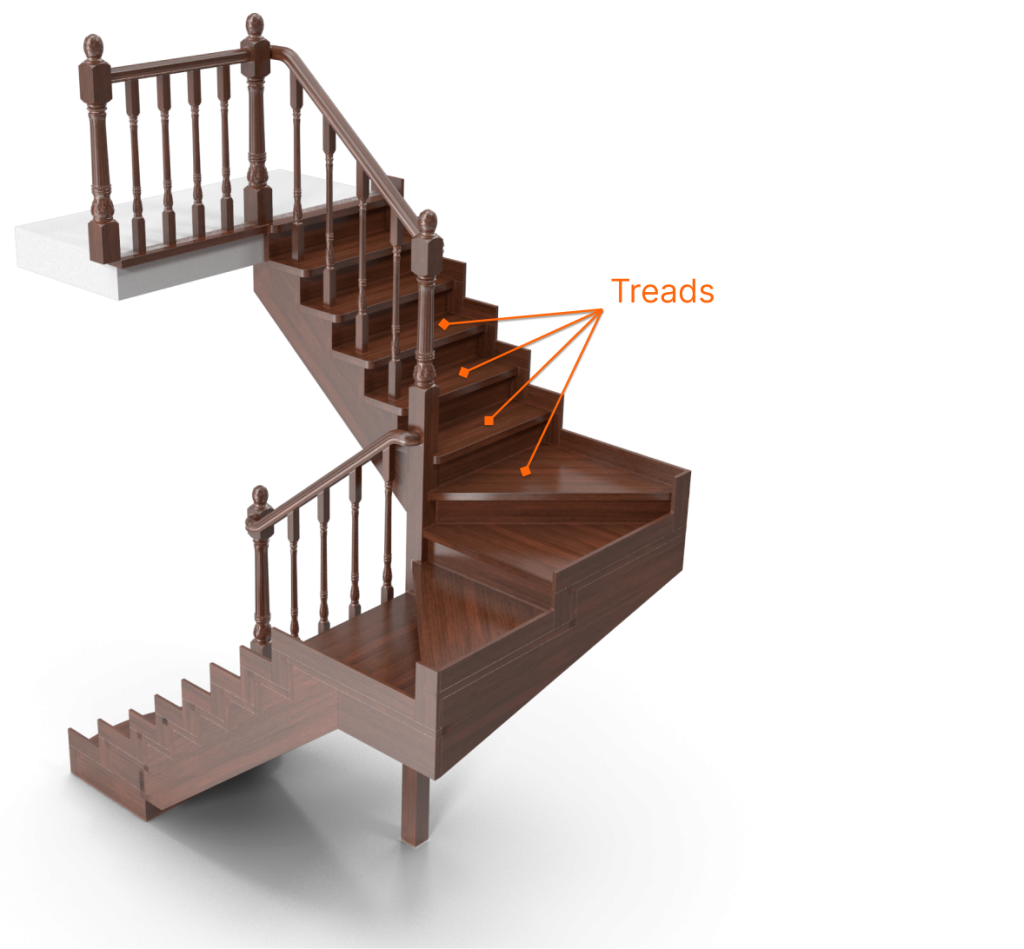
Treads – The tread is the horizontal section which is stepped on. This particular area is built to endure foot traffic while keeping your stairs visual aesthetic. This is why the tread material is so incredibly important. The range of materials available for stair treads is vast. So it’s easy to choose a material that balances both visual appeal and functionality for every project.
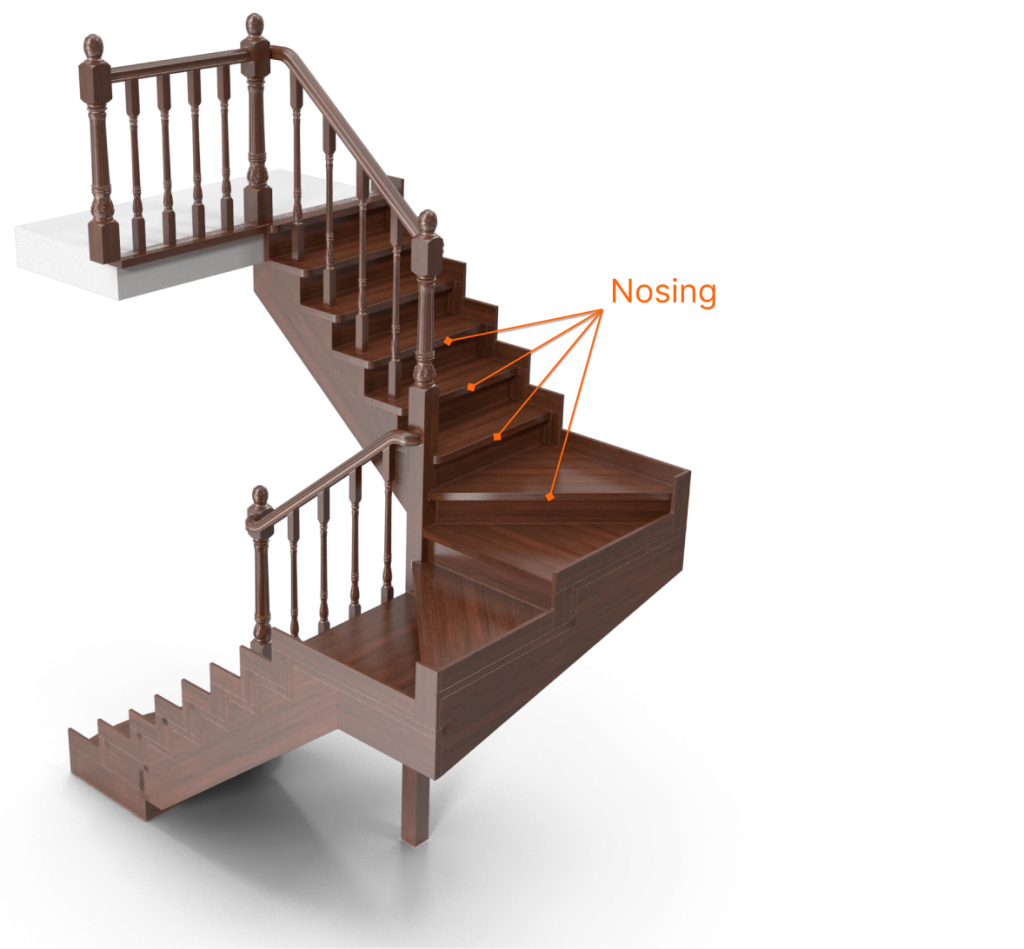
Nosing – Nosing is the front facing part of the treads that functions as a protection for the tread’s edge. This feature creates a larger tread surface area for extra foot room. It also works to prevent slips and falls by increasing the visual profile of each step.
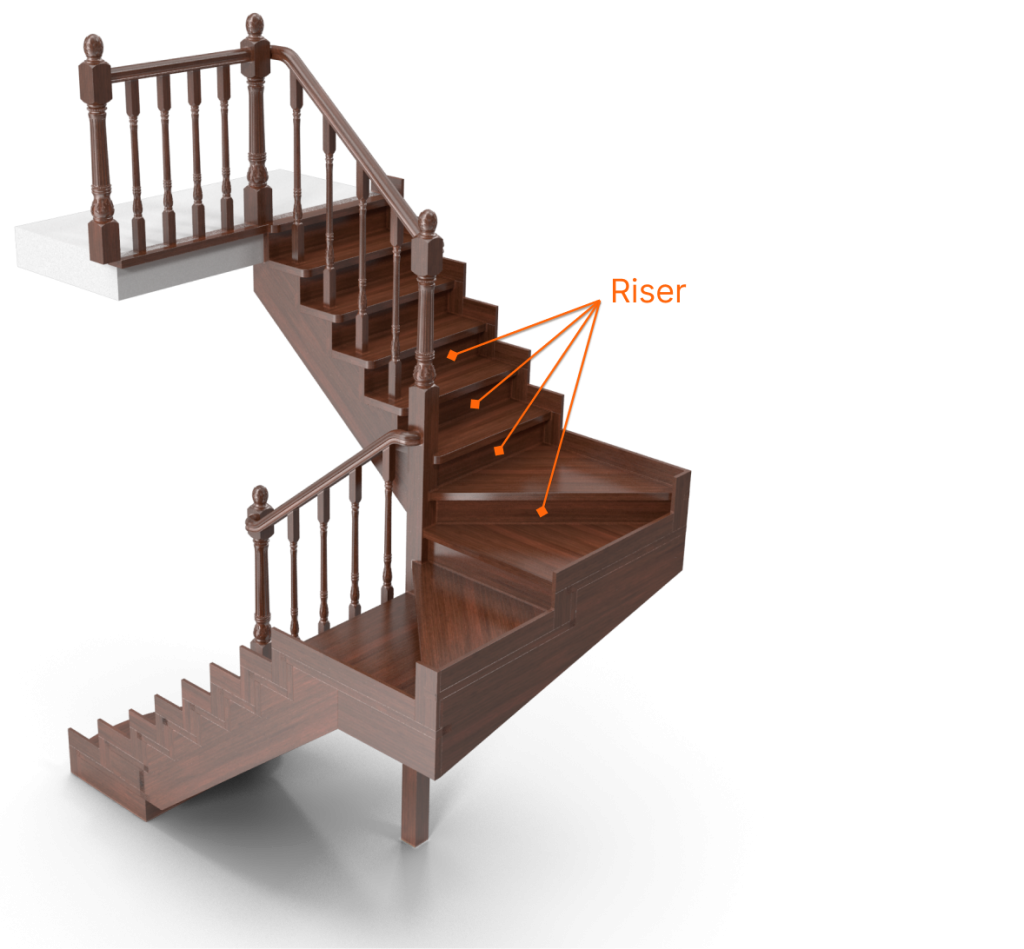
Risers – Risers are vertical boards which connect the treads together and determines the height of a step. If treads are considered to be the top of a step, then risers are the front. This means the first impression of a staircase is typically the risers. They also have several types of materials available to match the treads or create a contrast.
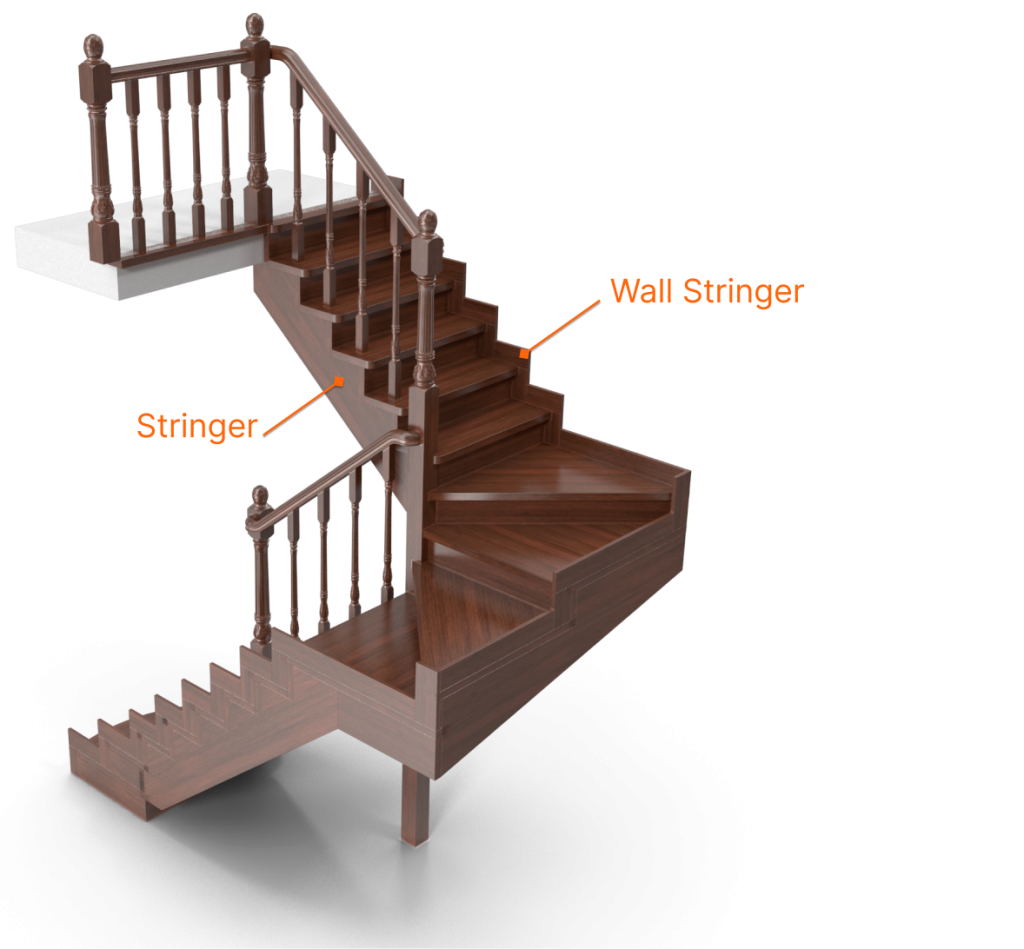
Stringer/Wall Stringer – Stringers are essential components which run parallel to the inclining treads and risers. They are installed on both sides of the staircase and act as the framework to ensure stability and support. Sometimes staircases run flush along a wall, in which the term ‘wall stringer’ comes into play. The stringer which links together the treads, risers, and the wall is considered to be a wall stringer. With many styles to choose from, stringers can either cover or highlight the side profile of each step.
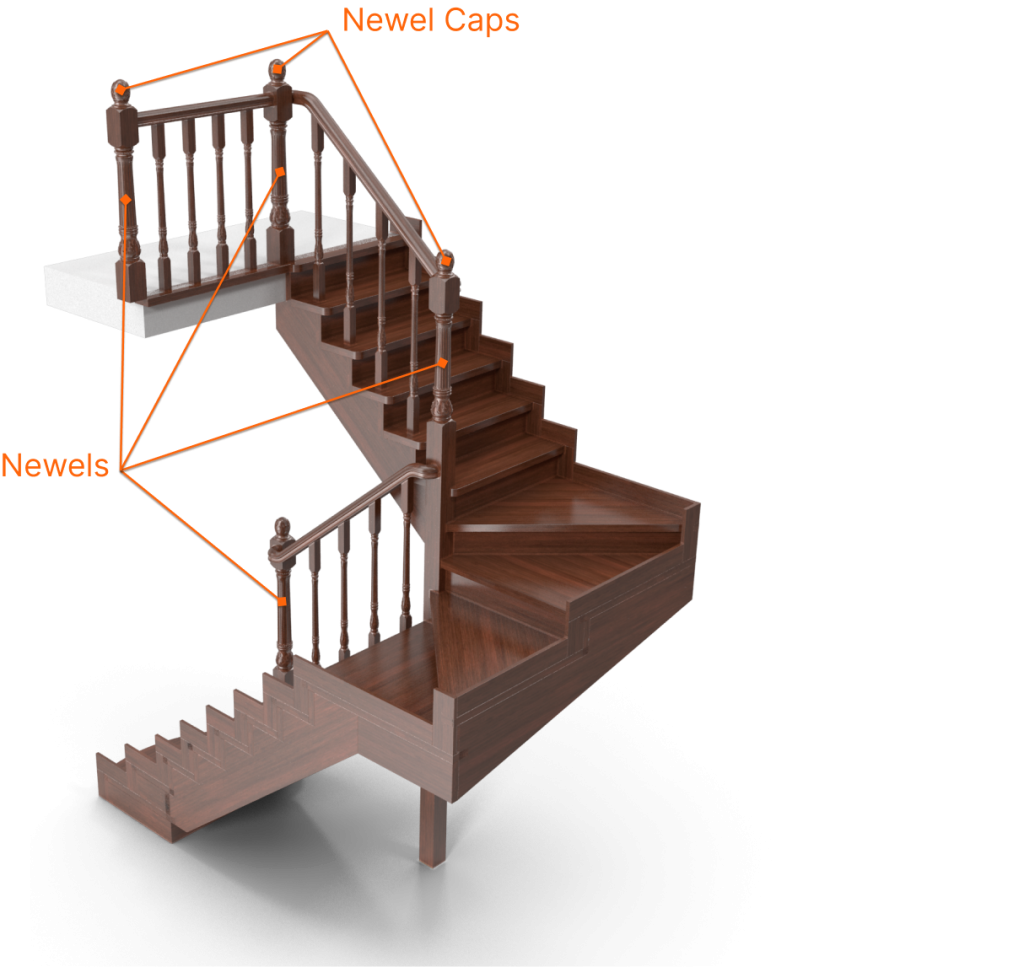
Newels – The newel (also simply known as posts) are vertical structures which bind the railing system to the stair or floor. They are typically located at both ends of a staircase as well as any landings that change the direction of the stairs. In addition, they are used to support the handrail and keep it in place along with the balusters. Over-the-post and post-to-post systems are the main classifications of Newel styles. However, the posts themselves can be created to fit any individual design.
Newel Cap – Newel caps (also known as Finials) are the decorative tops located on top of the newel posts.
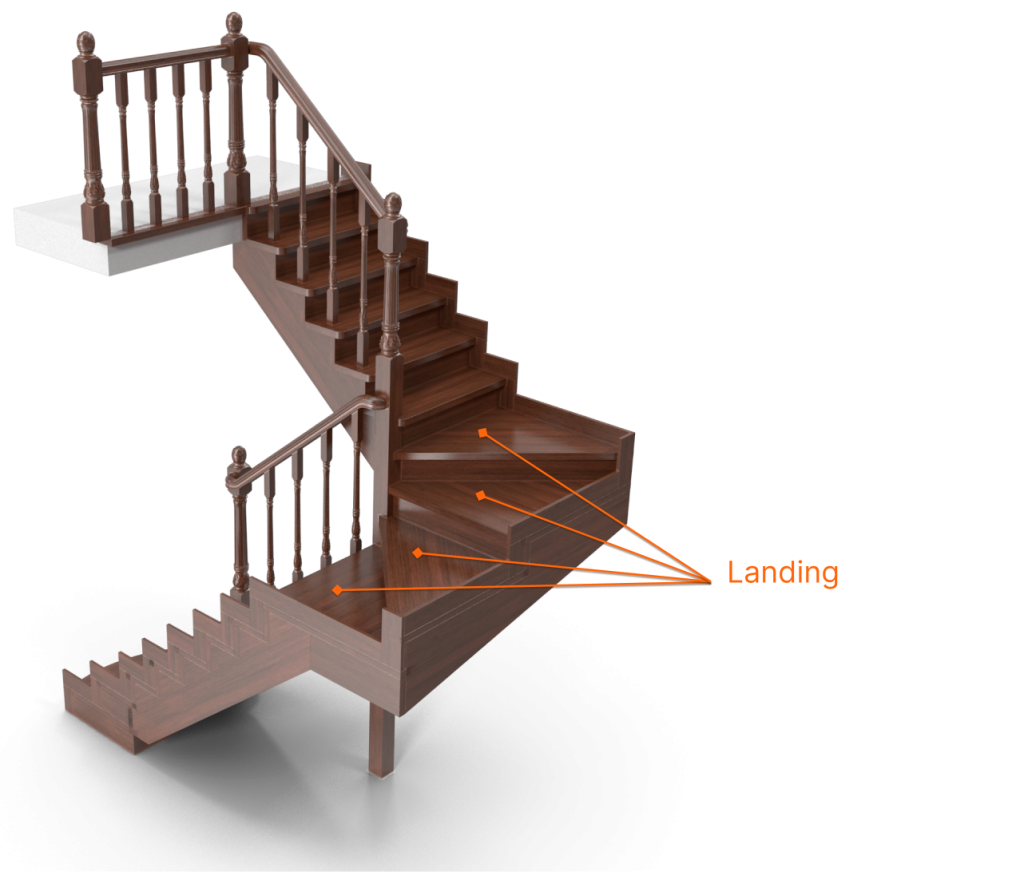
Landing – A landing is a particular step within the staircase or flight of stairs that is wider than the rest. This section also serves to change the direction of a staircase.
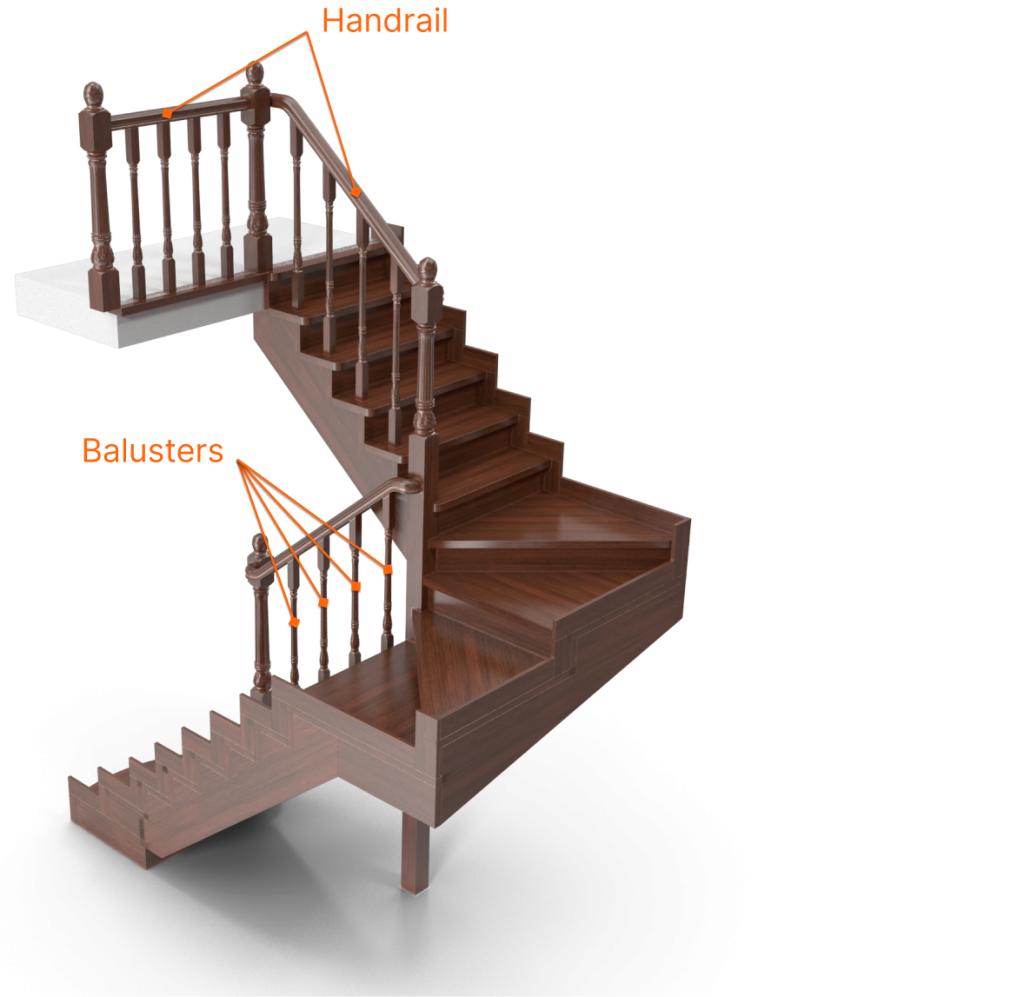
Handrail – Handrails (also known as Banister or Stair Railing) is another safety feature to prevent people from falling off the staircase. This protective rail follows the pitch or incline of the stairs and is capped on both ends by a Newel Post. Handrails can also be used to make a statement while keeping its function as a safety barrier.
Balusters – Balusters (also known as Spindles) are vertical pieces spaced out evenly throughout the length of the staircase. These pieces not only help support the handrail but also act as a safety feature to prevent people from falling. However, just because it’s a safety barrier doesn’t mean they can’t make a statement as well. Balusters are available in various materials and styles to match modern or classic aesthetics.
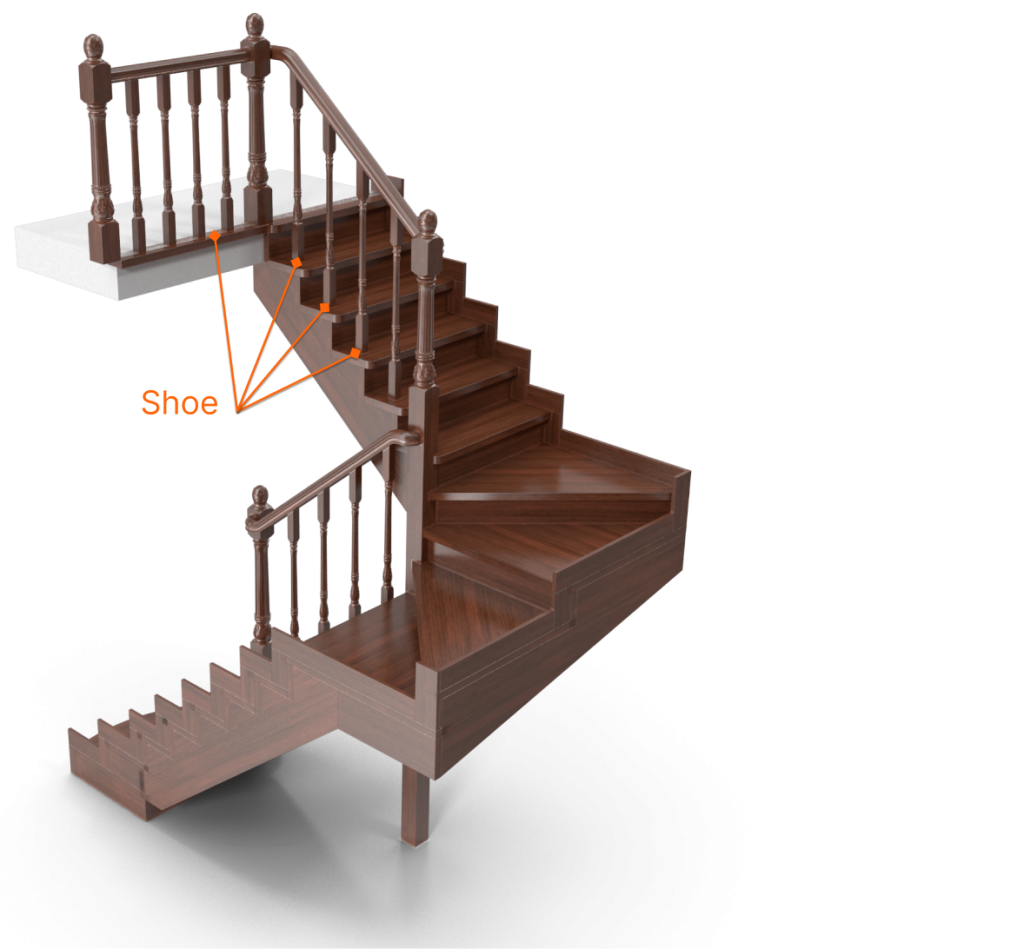
Shoe - The shoe is the baserail and is considered to be the ‘spine’ to a staircase. This is where the Balusters connect to the bottom of the staircase. This particular piece runs along the staircase on top of the stringer. Depending on the choice of balusters, a shoe can have pre-made grooves or no grooves for balusters to be screwed in.
Creating High Quality Stair Parts from Local Ozark Hardwoods
At Heritage Oak, we are continually refreshing our stock of quality hardwood stair parts. Whether you are looking to replace aging treads or a new handrail to update your stairs, we have you covered. Our local craftsmen are committed to creating the highest quality hardwood products for every project. Reach out to one of our expert craftsmen today and discover how to transform your staircase.